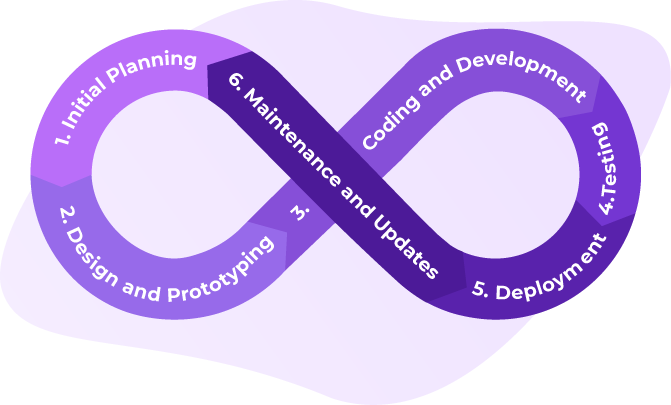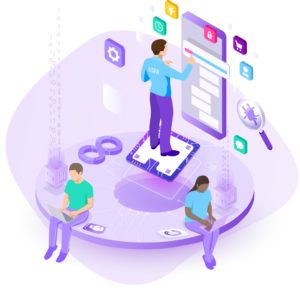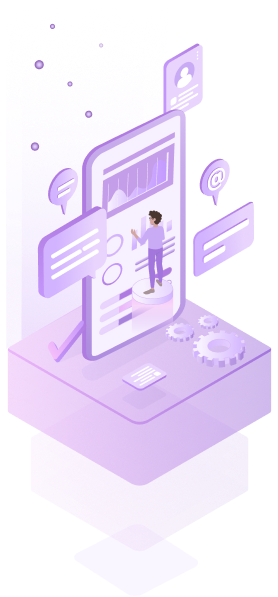In today’s world, where technology touches every aspect of our lives, the term ‘software development’ has become extremely common. What is the precise definition? This article explains software development in simple terms and highlights the importance of software developers in our digital world.
Understanding the Core of Software Development
Software development is a process that combines elements of both art and science to create computer applications. These applications range from games on your phone to complex operating systems in computers. The process of developing software involves various steps, from the initial idea to the final product that people use.
At its core, software development starts with identifying a problem or a need. For example, a group of people might need a way to share documents and messages quickly and securely. Once you identify the need, you should think about how a software application can solve this problem. This requires careful planning and consideration of the software’s purpose, design, and user interaction.
After the planning, developers start writing the code. Coding is like the building block of software development. Developers use programming languages to create the instructions that tell the application how to function. This stage requires careful attention and technical skills. Even small code errors can cause significant problems in the application’s functionality.
After developing the software, it’s essential to conduct testing. Testing is crucial because it helps find any issues or bugs in the software. The goal is to make sure that the software is working correctly and is easy and safe for people to use.
After testing, people can finally use the software. However, a software developer’s responsibilities do not stop here. They need to keep updating and improving the software, fixing any new issues that come up, and adding new features that users might need.
Steps in the Software Development Process
To make digital tools, you need to know the steps in software development. It involves important steps for creating digital tools.

- Initial Planning: The first stage of software development sets the foundation for the project. The team discusses the software’s objectives, purpose, target audience, and desired features. Having a clear vision and objectives guides the entire development process.
- Design and Prototyping: After the planning stage, the design phase begins. Designers and developers work together to determine how the software will look and how users will interact with it. They create diagrams and models to visualize the software. At this stage, we create a rough draft or model of the software to demonstrate its appearance and functionality.
- Coding and Development: This is the heart of the software development process. Developers write the code that turns the project plan and design into a working software application. Coding requires skill and attention to detail, as even small mistakes can lead to significant problems later on.
- Testing: After coding the software, we test it to ensure it works well and is free from errors or bugs. Testing involves trying out the software in different scenarios and fixing any issues that arise. Reviewing an essay or inspecting a car before a journey is akin to ensuring everything is functioning correctly.
- Deployment: After testing and refining the software, it is ready for users. Deployment involves making the software available for people to download and use. This milestone shows that the software has become a real product that users can use.
- Maintenance and Updates: Software development doesn’t end with deployment. The digital world is constantly evolving, and software needs to keep up. Developers maintain software by fixing issues, improving it, and updating it for new technologies or features. This ongoing process ensures that the software remains relevant and efficient.
By understanding these steps, you can gain insight into how the software development process creates digital tools.
Key Features of Effective Software Development
Effective software development is not just about writing code. Software development is a complex process that needs technical skills, user understanding, and teamwork. Let’s explore some important features for successful software development.

1. User-Centric Approach: At the heart of effective software development lies the end-user. Design every aspect of the software with the user in mind. This means understanding their needs, preferences, and challenges. A user-centric approach involves creating intuitive interfaces, ensuring the software is accessible to all, and delivering a satisfying user experience. Understanding the user’s experience is crucial. We should check if the feature is user-friendly and if the design makes sense to them. The software will function effectively and be easy for users to understand.
2. Adaptability: The tech world is fast-paced and ever-changing. New technologies, user preferences, and market trends can shift rapidly. Effective software development requires adaptability — the ability to pivot and incorporate new ideas and technologies. Stay updated, accept feedback, and be willing to make changes when necessary to keep up with the latest developments. Being adaptable in software development is like being a skilled surfer, always ready for the next tech innovation wave.
3. Quality Assurance and Testing: Imagine building a car without testing it for safety. Software development, similarly, needs rigorous quality assurance (QA) and testing. QA is the process of ensuring that the software meets the required standards and specifications. Thorough testing finds and fixes bugs, making sure the software is secure and works well in different conditions. Testing is not a one-time task but a continuous process that continues throughout the software development lifecycle. About being meticulous and making sure that the final product is not just good, but great.
4. Continuous Integration and Deployment: This feature is about making software development a smooth, ongoing process. Continuous integration involves regularly merging code changes into a central repository and automatically testing them. This approach helps in identifying issues early and reduces integration problems. Continuous deployment automatically deploys code changes to a testing or production environment after the build stage. New features and fixes can be quickly and frequently given to users, improving their overall experience.
5. Effective Collaboration: Software development is rarely a solo endeavor. It involves a team of professionals, each with their own expertise — developers, designers, project managers, QA testers, and more. Effective collaboration among these team members is crucial. It ensures that we consider different perspectives, share ideas, and ensure everyone is on the same page.
Collaboration tools like version control systems, project management software, and communication platforms are key in facilitating this collaborative effort. These tools help in tracking progress, managing tasks, and maintaining open lines of communication. Effective collaboration is similar to a well-run orchestra. In this analogy, each member of the collaboration is important, just like each member of an orchestra. The harmony created by the collaboration leads to a successful software product.
Moreover, collaboration extends beyond the internal team. It involves engaging with stakeholders, users, and other parties who have an interest in the software. Regular feedback, user testing, and stakeholder meetings are crucial to ensure the software meets its purpose and user needs.
The Integral Role of Software Developers
Software developers are central to the software development process, offering much more than coding expertise. They are the problem solvers and innovators who think critically to address complex challenges. Their work involves deeply understanding user needs, which is crucial for creating software that truly resonates with its audience. They are skilled at using new technologies and always learning to keep up with the changing tech world.
Software engineers utilize engineering tenets to construct software and systems aimed at problem resolution. They employ modeling languages and various tools to develop solutions that often possess a general applicability, rather than just catering to a single instance or client. Solutions developed through software engineering follow the principles of the scientific method and are required to perform effectively in real-world situations, similar to structures like bridges or elevators. Their role has seen significant expansion as products have grown smarter thanks to the integration of microprocessors, sensors, and additional software. With more products leveraging software to distinguish themselves in the market, it’s crucial that their software development is synchronized with the product’s mechanical and electrical development work.
These developers work together with UI/UX designers, project managers, and quality assurance specialists to create software. This teamwork is essential for crafting software that’s not only technically sound but also user-friendly and visually appealing.
A developer does more than just write code. They help with every step of making software, from the beginning idea to the final release. They ensure that they adjust every part of the software to provide the best user experience. Software developers create software by using technical skills, creativity, and strategic thinking to make functional and innovative solutions.
Emerging Trends in Software Development
Software development is rapidly evolving, with new trends constantly emerging. These trends shape the future of how software developers and users develop and use software.
AI and Machine Learning Integration: The integration of artificial intelligence (AI) and machine learning (ML) is revolutionizing software development. AI and ML algorithms automate complex tasks, offer data-driven insights, and create smarter, adaptable software solutions. This integration is enhancing the capabilities of software to learn from data, improve over time, and make smarter decisions.
Cloud Computing: The shift towards cloud computing is one of the most significant trends in software development. Cloud platforms offer scalability, allowing software to grow with user demand. They also provide flexibility, enabling developers to work and collaborate from anywhere. This trend has led to the development of stronger cloud-based apps. These apps are also easily expandable and fully utilize the benefits of cloud computing.
Mobile-first approach is important in software mobile application development because of the growing dependence on smartphones. This trend focuses on creating software for mobile users. It ensures that the software works well on mobile devices. Additionally, it aims to provide a good user experience. This approach is vital to cater to the vast and growing mobile user base.
DevOps Practices: DevOps, a combination of development and operations, is streamlining the software development process. These practices promote a culture of collaboration between software developers and IT operations teams. The result is enhanced efficiency, faster development cycles, and reduced time-to-market for software products.
Cybersecurity Focus: As cyber threats continue to evolve, cybersecurity has become a top priority in software development. To ensure user data safety and trust, it is crucial to prioritize software security from the start. This involves implementing strong cybersecurity measures and consistently monitoring and updating them.
Conclusion
Software development is a dynamic and multifaceted field that is about much more than just coding. It involves creating solutions that have a real impact on people’s lives and driving technological progress. To appreciate software development, we need to understand its process, effectiveness, and the changing role of developers. As technology advances, software development will evolve, shaping our digital world.


